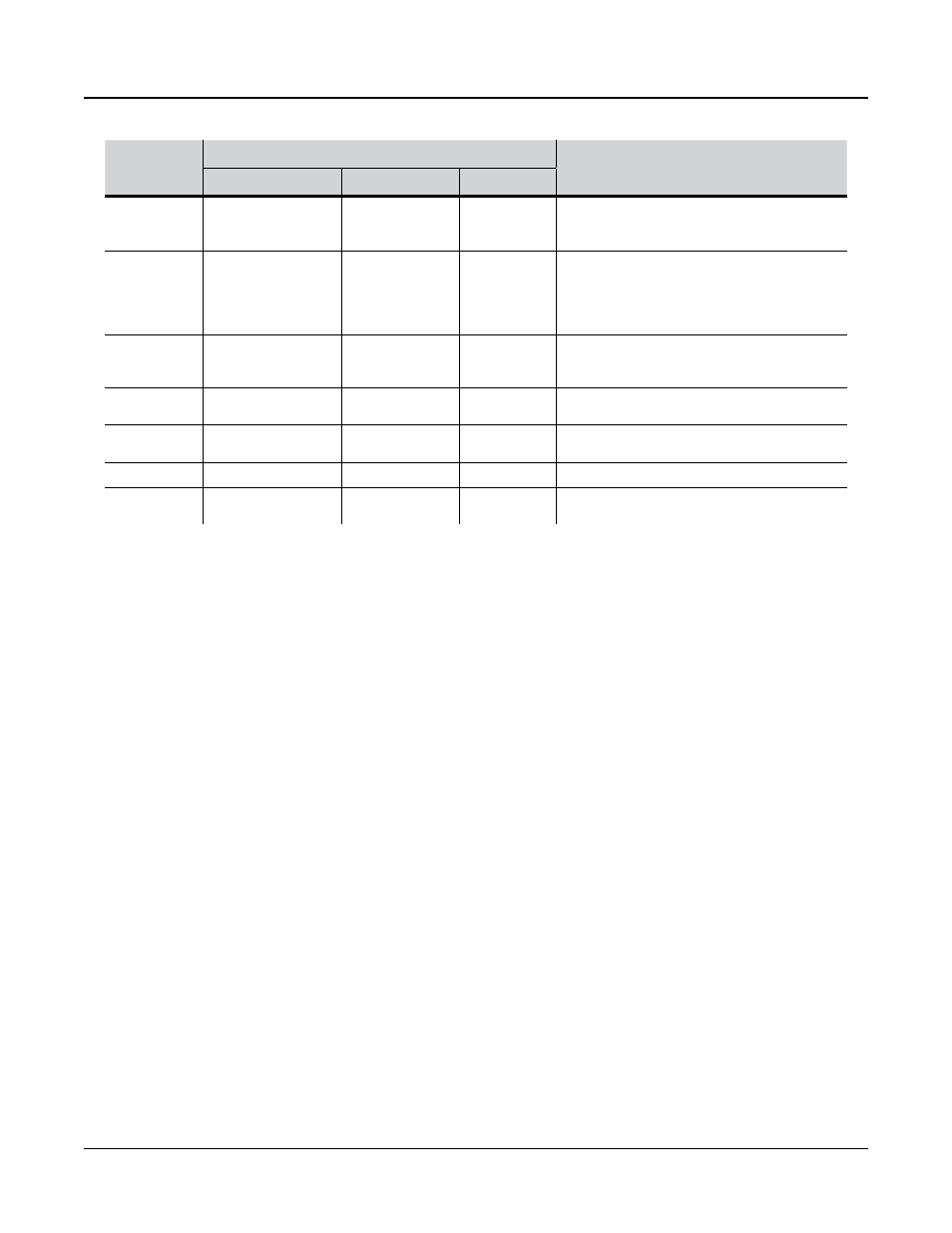Kurzweil Forte User Manual
Page 157

Program Edit Mode
Arpeggiator Common Parameters
7-60
Shift Limit
Resulting Arpeggiation (When Limit Option is Unipolar)
Comment
Up
Down
Up
6 ST (F#4)
C4, D
#
4, F
#
4,
D
#
4, C4
D#4, …
Same notes play in both directions when Shift
Limit is a multiple of Shift Amount
7 ST (G4)
C4, D
#
4, F
#
4,
E4, C
#
4,
D
#
4, …
Last upward note before shift limit is F#4, next
upward note would be A4, which is 2 ST from
shift limit (G4); therefore first downward note is
E4 (2 ST below last upward note)
8 ST (G
#
4)
C4, D
#
4, F
#
4,
F4, D4,
D
#
4, …
A4 is 1 ST from shift limit, therefore first
downward note is F4 (1 ST lower than last
upward note)
9 ST (A4)
C4, D
#
4, F
#
4, A4
F
#
4, D
#
4, C4,
D#4, …
All symmetrical again; now A4 is within shift limit
10 ST (A#4)
C4, D
#
4, F
#
4, A4,
G4, E4, C
#
4,
D
#
4, …
Next upward note would be C5, which is 2 ST
from shift limit
11 ST (B4)
C4, D
#
4, F
#
4, A4,
G
#
4, F4, D4,
D
#
4, …
C5 is 1 ST from shift limit
12 ST (C5)
C4, D
#
4, F
#
4, A4,
C5,
A4, F
#
4, D
#
4,
C4,
D#4, …
Symmetrical again, including C5
Bipolar
starts out the same way as Unipolar, but during downward note shifting, it continues
past the original pitch until it hits the shift limit in the opposite direction, where it reverses
again.
Float Res
adds a bit of apparent randomness to the process. “Float” means that when the
Arpeggiator reaches the shift limit, it resets—but not to its original pitch as with plain
Reset. Like Unipolar and Bipolar, it looks at the first note that would exceed the shift limit,
and calculates the interval between that note and the shift limit. It then restarts the cycle of
latched notes, transposing the entire cycle by the interval it just calculated, then shifting each
subsequent cycle by the value of Shift Amount, until it reaches the shift limit again.
Here’s a very simple example. Suppose that the only note in the Arpeggiator cycle is C4,
Shift Amount is 4 (a third), and Shift Limit is 7 (so notes won’t get shifted above G4). The
Arpeggiator plays C4, then E4. The next note should be G
#
4, but that’s above the shift
limit—so the Forte calculates the difference between that G
#
4 and the shift limit (G4):
one semitone. It adds that difference to the original starting note (C4) and plays that note
next—C
#
4. The next note (F4) is within the shift limit, but the next note (A4) isn’t, so it gets
translated into D4—and so on.
FloatUnip
uses the same concept as Float Res and applies it to Unipolar mode: when the
Arpeggiator reaches the shift limit, it calculates the difference between the next note and
the limit, and transposes the next cycle of notes down by that interval, then shifts each
subsequent cycle down until it reaches the original pitch.
FloatBip
is similar to FloatUnip, but the downward shift limit isn’t the original pitch, it’s the
negative of the Shift Limit value.